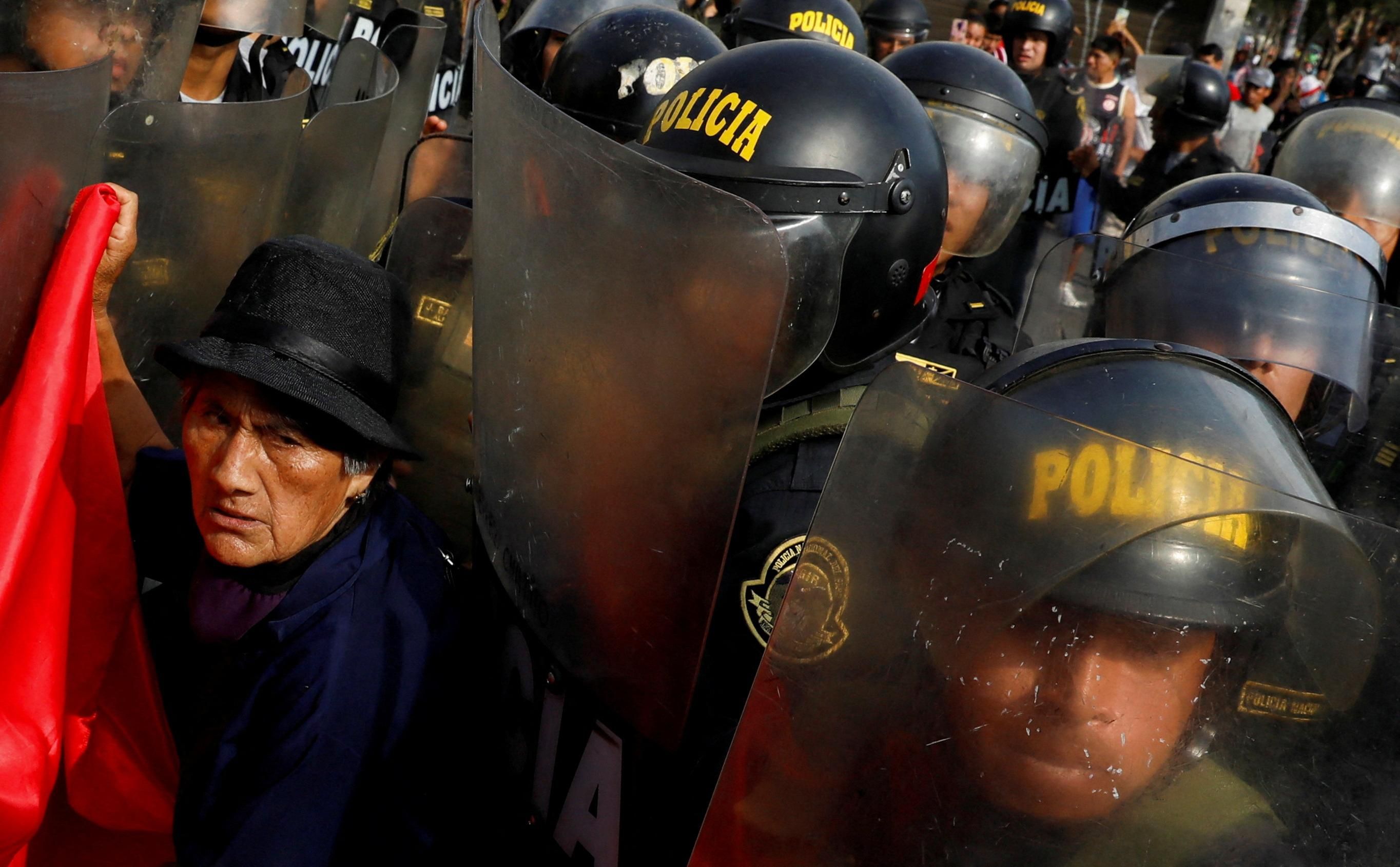If it seems like Peru’s last few governments can’t catch a break, you’re not far off. Peruvian governments collapse like you fall asleep: slowly ... and then all at once.
Last year’s chaos under President Pedro Castillo showed us that, and the new Dina Boluarte administration will likely suffer a similar fate. Under Castillo, a string of efforts to oust him on the basis of “moral incapacity” and criminal investigations into him and members of his inner circle chipped slowly away at his mandate for a year and a half, only for it to entirely crumble in a matter of hours. In one day, Castillo attempted to illegally dissolve Congress, got ousted by Congress, was arrested and transferred to preventive detention, and was succeeded by his vice president.
It has been two months since the chaos of Dec. 7, and Peruvians are still in political limbo. According to polls and demonstrations, most people want Boluarte and the old Congress replaced through early elections, but this is a tough ask. While there are a few possible mechanisms to move up the next election (currently scheduled for April 2026), each comes at a cost.
The road to elections. One path is for Congress to approve a constitutional reform that would bring presidential and legislative elections forward, but this requires approval from 87 of 130 lawmakers in two consecutive legislatures or from 66 along with a public referendum. Either way, that’s a lot of votes for an extremely fragmented unicameral Congress, and lawmakers have been dragging their feet on this for weeks.
After protests first erupted in December, Congress approved a plan to move up general elections by two years to April 2024. But this still needed ratification, and with protests ongoing and the death toll rising, right-wing lawmakers presented an alternative proposal to hold elections by the end of 2023 instead. This was rejected after a long debate, with some leftist lawmakers conditioning support for an early vote on an entirely new constitution (a proposal for this was also rejected), while others remained dead set on finishing out their terms until July 2026.
Impeaching Boluarte is another possible route. According to the constitution, in her absence, the president of Congress would take office and immediately call for elections. Though 26 lawmakers signed onto a motion to oust her last month, it’s difficult to see this succeeding given lawmakers’ determination to cling to their posts for as long as they can.
Then there is the nuclear option: If Congress fails to reach an agreement to move elections up and protests escalate, Boluarte may have little choice but to resign, which would trigger early elections. While she has ruled this out several times, violent protests have now claimed 59 lives, including 47 civilians in clashes with armed forces, 11 in accidents related to road blockades, and one police officer who was burned alive in his patrol car. A presidential resignation on these grounds would not be out of the ordinary; back in 2020, interim President Manuel Merino resigned after just five days in office during which anti-government protests left two people dead.
No matter which of these avenues ultimately prompts early elections, social discontent is unlikely to subside until a vote is held. The country has had six presidents since the 2016 elections, making it tough to imagine a new administration would bring much respite. Public anger precedes the current crisis and was only exacerbated by the corruption scandals involving the entire political class, the effects of the pandemic, and the ongoing conflict.
What’s more, the next election won’t be the end of the story either. The electoral field will likely be extremely fragmented – around a dozen candidates could compete with very little support or the backing of an established party. Not only does this raise the odds of at least one wildcard entering the runoff, but that candidate could easily become more competitive and ultimately win if anti-incumbency sentiment and desperation prevail. This is precisely what led to the election of Castillo, his eventual downfall, and now the crisis where we find ourselves today. Barring the approval of meaningful reforms to strengthen the country’s political system, Peruvian voters face a bleak year ahead.
So, who can get Peru out of this mess? If you’re a close watcher of Latin America, you might ask that question with some degree of trepidation as you wonder if this crisis has left a vacuum big enough for someone risky to fill. The good news is that there doesn’t seem to be someone on the horizon within the country’s political (albeit near-decimated) establishment who can garner widespread support, let alone follow through on consolidating much power. But that leaves one wondering if Peru’s democratic checks meant to prevent such power consolidation (such as term limits, bans on consecutive re-election, and a “moral incapacity” clause to impeach a president) might ultimately lead to the erosion of the very institutions they seek to preserve.
To those seeking answers, I advise you to look southward. While the problems and potential solutions in Chile and Peru are not identical, Chile’s attempt at a societal and political reckoning through a rewrite of its constitution can give us a look into simply how long and bumpy the road to stability can be. For both, it will require a process of trial and error, and likely take place over years to come.
Yael Sternberg is a Latin America expert with Eurasia Group.
